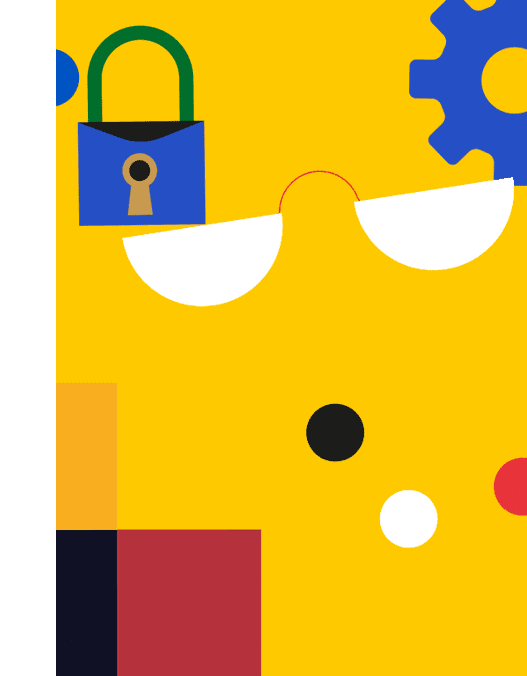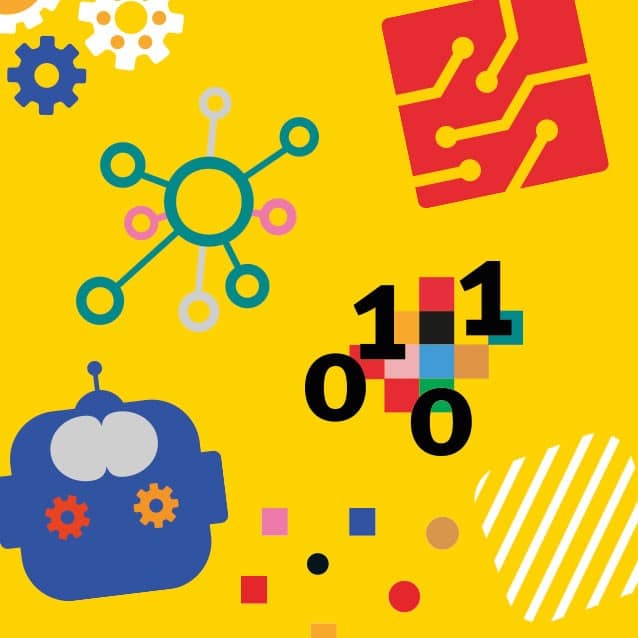Over the past few years, we’ve all had to deal with digitization in an unintentional way – the COVID-19 pandemic with all its lockdowns and home office phases has given online meeting formats like Zoom, GoToMeeting, TEAMS, Jitsi and many others a rapid boost and turned us all into video meeting specialists.
Udo Leinhäuser (iSEO.works) dug deeper into how today’s digital meeting landscape has changed the way we present ourselves in an interview with Robert Spengler. The subtitling and transcription of the interview recording has been done by our internal Leinhäuser audio-video team.
In the frame below you can view the original video on YouTube. With your click, personal data will be transferred to a server in the USA (YouTube). If you agree, go ahead and click on „Load video”.
If you do not agree, the transcript of the interview is available below.
Udo: My guest today is someone who would probably describe himself as having a big personality. It is a description that he deserves – meant as a compliment. I saw him live on stage four years ago. Today, he trains people to make small presentations at companies as well as spectacular appearances on very, very large stages. I would now like to welcome the trainer, keynote speaker and writer Robert Spengler. Welcome, Robert!
Robert: Hello, thanks, Udo, for inviting me today. Yes, here he is, the big personality. I personally do not view myself this way. How did that get in here? I’m often called a “Rampensau”, a German word for attention hog that certainly applies and might interest the viewers, readers or listeners: Audiences generally think of a big personality in positive terms. It means someone is passionate, uninhibited. Yes, I would also use the word to describe myself. In acting, someone with a big personality might try to steal the show. And people don’t like attention hogs, particularly if you are in an ensemble. But, as a speaker, I’m up on the stage all by myself and I can be the star. So, by all means, call me an attention hog then.
Udo: It’s kind of hard not to be as a keynote speaker. I think this is something that applies not only to acting but also in companies: Anyone who steps forward tends to be seen in such terms, and the word doesn’t exactly have a positive connotation. But you are actually using it in a positive way. Someone who is willing to stand up in front of 100 people and speak to them. That kind of person cannot come off as a wallflower. There is no doubt about it. Robert, when we got to know each other, you made your living by winning over people in real life, sometimes even on stage with other actors on hand, coming in contact with them and training them. And, then, a huge change swept over us. We were exiled to remote work. And your type of work became unimaginable. How difficult is or was it for you to actually reinvent yourself? You had to really change your medium completely. And what about today? As I understand things now, you earn a large portion of your money with online courses and stories like this one right now.
Robert: Yes, it was all a real punch in the gut. Six months earlier, I would have thought: No way, online won’t work at all. I have to feel the people. I’d go even further: I have to smell them. You’re probably saying: It’s a good thing that you no longer smell them today. But you see what I’m getting at in terms of the audience’s feedback. You almost never get that kind of input online. As a speaker, you simply gaze into this black hole. You don’t experience anything. It took some getting used to. I’ll also admit: There was no alternative. If you want to keep your head above water, then you have to seize the initiative. After realizing this, I set up a studio very fast, that is the office where I am right now. It is something of a TV and audio studio, even if it is pretty teeny. I have set up a whole lot of technology, invested a pile of money. I think this was the key. Technology plays a major role in this digital world. It ensures you’re well received, visually and especially in terms of sound. And, yes, I now earn 80% of my income from my digital appearances.
Udo: We’ll talk about the technology later. It is a fascinating subject. We all certainly have questions and things on our mind that we’d like clarity on. First I’d like to know, how does it work? When you performed live, you were known for your slightly ironic charm and your somewhat provocative style … I have seen photos of you with a really wild look wearing a cap, shades of a Mafia outfit, with enormous sunglasses and what not. That was your trademark. I don’t think that you can take this approach today, sitting in front of 200 people with your enormous sunglasses. How much have you been able to incorporate into the online world?
Robert: Certainly, I have toned down my act because of course I can’t walk around the room anymore. I can still wear the sunglasses. But the body language is visibly reduced. Maybe we’ll discuss that more in depth a bit later. Appearance is definitely important. But you see only part of me. I am limited in these terms. In terms of clothing, I’m wearing a blue sports coat today. I generally wear a blue shirt because it is the ideal color for the camera. My colorful shirts with the bright, finely detailed patterns produce a flickering effect. That would be my first tip: So, when you’re presenting online, please stick to subtle colors. Patterns are OK as long as they feature large elements. That should be fine. The best solution is dark blue, light blue, navy blue, azure, gray, light gray, dark gray, anthracite, dark black gray or whatever. These are the best colors.
Udo: Shades of blue and gray, so to speak.
Robert: Exactly. Gray is, so to speak, the most neutral color. But it can naturally be a little boring as well.
Udo: OK, hand on your heart. We’ve been sitting here in our home offices for two years and constantly using Google Meet and Zoom and whatever. No one dares to simply pick up the phone and call somebody unannounced anymore. It is something of faux pas if you do. You now arrange a time for a call. But do you think that the content and quality of meetings have improved over the past two years? I have the impression that the first sentence is always: “Can you hear me? Hello?” Has this improved? What is your impression?
Robert: It has actually improved very, very, very much. My biggest battle two years ago? I had to help customers to get over their inhibitions! They were so petrified of the technology. And this question: “Can you hear me?” Yes, indeed. But I not only say “Can you hear me?”, but also “Is the quality good?” “Do you understand me well?” But we still have a long, long way to go. Nonetheless, a whole lot has happened in the past two years. A certain routine has developed. I have also prepared a manual. I need to update it again. It still explains how to invite people to an online meeting. For a long time, people struggled with that. Now, it’s second nature.
Udo: I’ve seen some shirts that say: “I just had an online meeting that could have been an email” or something like that.
Robert: This is a downside worth mentioning. I conducted a survey on LinkedIn and found out that the number of online meetings has skyrocketed and that their quality has not kept pace with the growth.
Udo: Which sins do you think are still being committed most frequently? We saw and heard all sorts of funny things in the beginning. And they quickly turned up in social media, some sort of fails in the background, photobombs, etc. But, these days, I think we’ve reached some solid ground. But what kinds of annoying things are still happening today?
Robert: I’m talking about the flippancy of many people, including the seasoned people who are used to hopping from one online meeting to another. They simply drop in somewhere and put in their two cents’ worth. I think this is the biggest problem, and I see it over and over again. Another problem is that many presentations, when we are talking about the use of media, simply take the live-meeting approach and apply it to the online meeting. That won’t cut it. That won’t work.
Udo: What sort of changes would you suggest or where can people generally improve? I am thinking about switching to Prezi right now because it is much more dynamic and somehow more exciting. But maybe it’s too overwhelming for people sitting at their monitors? No idea. You have to be careful, don’t you?
Robert: Yes, Prezi is certainly a great tool. I mentioned PowerPoint simply because it is the most prevalent and popular program. As you mentioned, Prezi has a certain dynamism to it. What’s important to me is that we take a critical look at this question: How do I actually start a meeting? The following happens, most presentations start this way: After a few opening remarks, the PowerPoint slides dominate the screen. The speaker or instructor is buried somewhere beneath as a tiny thumbnail. You will see in huge letters: Today is September 15, 1982, or whatever. Welcome to …
No, scratch all this. Forget about the opening slide and the concluding slide. The most important, honest, credible, dynamic argument in a presentation is you, the image of you, how you appear on the video. On stage, it’s not as irritating. I see both things. I glance at the presentation and then move on. But here, online, I am practically forced to look at this thing. Last time, I had a get-to-know-you meeting. “Q&A” was shown in huge letters for 20 minutes, and I kept looking at it. These were new people to me, a get-to-know-you session after all, and I didn’t want to rock the boat too much. But I finally had enough after 20 minutes and said: “Could you please turn off the Q&A sign?” Yes, you have to be direct sometimes.
Udo: What you just said is really quite interesting. One of the most distracting things is when people are constantly looking around the room. But that certainly has something to do with the camera position. We all know the classic situation when you have the feeling that someone is watching you from above the whole time. But what is the perfect angle? Straight ahead, a right angle? What do you consider to be the ideal camera position?
Robert: In fact, when you look at the eye axis, that is, at a right angle, the lens should be right here and point to the eye axis. You will then look people in the eye at eye level.
Udo: I should position my camera higher, shouldn’t I?
Robert: Yes, exactly. There are naturally a few other ideas and tips. But that would be ideal. In Germany, we talk about being on eye level, or equals, during personal dialogue: We are at eye level when two people are the same size. This is also the ideal form of communication. And we offset it by taking a step back or a step closer to prevent the angle from being so sharp. The next thing is naturally the sound. You see it over and over again on YouTube videos, these people with monstrous microphones, some real whoppers.
Udo: Do you need things like that? Is this really necessary? Doesn’t it bother you when it is constantly dangling in front of you? What do you use? I don’t see anything right now.
Robert: You aren’t seeing anything. You will find these podcast microphones, this is what they are actually called, these fat monsters used by radio stations, frequently in studios. These are microphones into which you directly speak, ones where no image is usually shown. They have made their way into online meetings because they have good sound, are very sonorous and look really cool. I always enjoy it when I’m sitting across from someone and I see this microphone. That has style somehow. I personally don’t feel comfortable with them, and I do everything I can to make sure that no one sees the microphone. I have a directional microphone. But it is really a studio microphone. It’s hanging over me right now. Then, it comes down. Exactly. And then you notice a change in the sound. It has to be relatively close, but not right in my face. Sound is the most important thing of all. We can excuse a poor picture. You are more willing to excuse no picture than bad sound. Things really get on your nerves when it echoes and clangs. The bad part of the entire story: I can check the picture myself. I see it. I look like this. The brightness and sharpness are just right. It looks a little worse on the other side. Yes, I am aware of that, too. But the sound, it seems good to me. But when nothing is received on the other end, I am not aware of it. I need feedback from the other side here. The question is not: “Do you hear me? or do you hear me well?” Rather, it is: “Is it pleasant to listen to me?”
Udo: Yes, that is a good point. We’ve all been there. When you hear a constant clang somehow or scratching or something else, like an old radio, it will get on your nerves after a while. There are two situations. Most of us who do not happen to be keynote speakers 80% of our meetings will be in a group setting. Jour fixes, weekly sales reports, etc. What is the perfect situation here? Sitting or standing? I can imagine that this is not so critical. But I think that if you were giving a talk it would be better to stand simply because of your breathing, your posture and muscle tension. What do you do?
Robert: I stand!
Udo: Are you standing right now?
Robert: Yes. The fascinating thing is that it doesn’t look like it. I am constantly asked about this question, Particularly when you are talking about presence in online meetings. And people will frequently say: “Mr. Spengler, are you standing?” Somehow, people unconsciously perceive it. People then want to know more. But I have a completely different dynamic, when I’m standing. My hands are much more agile, and my voice is stronger because I can naturally breathe better. It is not pressed in. For this reason, I urge you to stand whenever possible.
Udo: What do you prefer as a speaker in such situations? Does it make no difference whether the viewers have the camera on or off? You will most likely tend to completely ignore it. I think that during group meetings it is really nice when you can see one another and you can notice if someone dozes off out of boredom, or what would you recommend?
Robert: I have a polarizing view. This was one of my most successful posts on LinkedIn. It generated an intense debate because I urged someone to turn off the camera during dull online meetings. Personally, if it’s a meeting platform where both sides can turn on their cameras, which is frequently the case, then you have the issue of streaming, I don’t see my audience then anyway. The quality is better. When I give a keynote address, it is streamed. It is provided in excellent quality. And I certainly do not see my audience anyway. I am used to looking into this black hole. But if I were invited to speak to a Zoom meeting or a Microsoft Teams meeting, I’m something of an alien because I say: Turn off your cameras and be ready again afterward. Turn it back on if you have questions. Simply sit back, enjoy and take notes. If things get boring, grab a cup of coffee or whatever. I am an alien in these terms. Many people consider it to be a loss of control. I no longer see what is going on over there. I don’t see the bored guy over there. I don’t catch somebody writing an email. I will even say things like “I don’t even want to see it.” If somebody is writing an email, I have no idea why. Is it really an urgent email or is the individual taking some sort of notes. I have seen it myself. People will something like: “Hey, cool talk by Spengler. I’m going to write it all down.” Looking at the camera right now, no, that won’t work. For this reason, I ask the audience to turn off the camera when I am in speech situation. How about a dialogue? The camera certainly must be on then. It would crazy if you were to say right now: “I’m turning my camera off now. I’ll ask you questions, and only Robert will speak.” That is not good form.
Udo: But I have seen this in group meetings, and I personally considered it to be impolite. I was the only one of three or four participants who turned the camera on. The others only used their profile photo. I thought to myself: “I don’t want to attend a meeting with this cartoon cat.” That was now my personal impression. You are much more involved than I am. But I’m glad that you have backed me up.
Robert: We have to simply make a distinction: Is this a conversation? Is it a dialogue? Then, I will go ahead, be brash and say: “Man, Mr. Leinhäuser, would you kindly turn on your camera? It seems to me that we are speaking to each other with our backs turned.” I am really tough in such cases. I will make a demand, and this Mr. Leinhäuser must provide me with a good excuse. Then, you’ll hear “camera broken” or whatever or “I don’t look good.” He must have a guilty conscious at the very least. There are some tips and tricks to get the camera on.
Udo: That is a good point. I’ll keep it in mind. As far as backgrounds go, everyone doesn’t have a chic background in the office as you. You mentioned earlier that you had invested in technology. You likely thought carefully about what to place in the background. Not everyone has such a background now, and everyone doesn’t have an additional room at home where they can build such a thing for use during a lockdown. This raises the question: Virtual backgrounds – do they make sense? Is a better solution, or should you just forget it?
Robert: I still remember my very first Zoom meeting with such a virtual background. The meeting was with a guy in San Francisco, your classic Silicon Valley character. He had the Golden Gate Bridge in the background. Everything was so frayed and he was dressed like Obi Wan Kenobi with the Force radiating from him. I thought to myself: Wow, weird dude. It threw me off a bit there. The best background is always the real background, one like you are seeing now. Some people will look at it and say: “OK, is that New York or where?” This means that it comes across as something personal. The lamp that you see in the background is staged. Some elements are staged but the entire thing should not distract. It should be personal, but not distracting. Let’s examine your background now. It looks good. It communicates a message. It has something personal. I look at the image and it seems to make sense. It is positioned in such a way, that the image would not be broken up by your head, if you were to sit differently. I like it. It is somewhat personal. Then, you have these variants of the virtual backgrounds that you already mentioned. San Francisco and swaying palm trees … No, that doesn’t work at all. And, then, we may find ourselves in the situation in which some people may have set up their home offices in the kitchen. One spouse is in the kitchen, and the other is in the bedroom. That’s obviously more intimate. It’s no longer just personality. It’s really veering into privacy. You have several options here, things like the blur effect. Everything is obscured, just as I’m doing now. Admittedly, my blurred effect is produced by a high-quality camera. It is truly seamless. No hectic hard edges. But people who do not have this technology naturally can use this blur effect. And if such a home office is being used, a screen will help, something that you can attach to the ceiling and pull down, something like a spring shade. This will give you a neutral background and you won’t see any part of the kitchen or bedroom. These are my tips.
Udo: You can drag out the screen your father used to show slides – and simply pull it down.
Robert: Exactly. That’s the idea. I also have greenscreen technology. It is really nothing but a green screen. I’m talking about a green fabric that you can use to dive into a new world.
Udo: One more question about technology, and then we will slowly pack up everything. People frequently have connection problems. What do you prefer? Wi-Fi or cable connection for a laptop? Which is better?
Robert: The cable connection is always the best choice. I frequently hear this argument: “With my Wi-Fi, I get 100 gigabytes or Mbit.” I don’t remember the figure, but a huge amount of data transmission. This is indeed theoretically possible. But Wi-Fi always fluctuates. This means that you may suddenly have a few milliseconds in which just 30 Mbits are transmitted. With LAN, with cable, it’s simply more stable. This means that you should use the cable whenever possible.
Udo: OK, at this point, it’s time to wrap things up. I don’t want to take up too much of your time. I’m sure you could easily go on for a couple of more hours, let us in on your secrets and provide us with some tips. But at some point we have to find a stopping point. Anybody who wants a few more tips can certainly reach out to you on LinkedIn.
Robert: Yes! I’ll add it in just a second, a QR code directly to LinkedIn. You can find a good tip there at least once a week.
Udo: Great. How do you do it personally? Do you have some sort of checklist that you run down before you head off to large meetings?
Robert: Yes, I do use such a checklist. It’s easy to get caught up in your routine, and sometimes we forget to close programs that then pop up. These are the checklists I use before I enter a meeting: “Do I have everything that I really need, and is everything I don’t need turned off?” Mistakes always occur, and you can reduce them by using a checklist. It can be as simple as informing others: “Hey, we are making a video right now.” This can help prevent the dog from running in. Things like that. I have a checklist that I run down each day.
Udo: Would you be willing to share it with our viewers upon request? Great! Viewers, the best way to contact Robert Spengler is directly on LinkedIn. Connect with him. And if you ask nicely, he will even send his personal checklist to you.
Robert, thank you very much for your time, And for all of the tips. Let’s hope they’ll lead to good and much improved online meetings. Thank you.
Robert: Yup, thank you very much. Let’s hope that our presentations become better. And more fiery.







